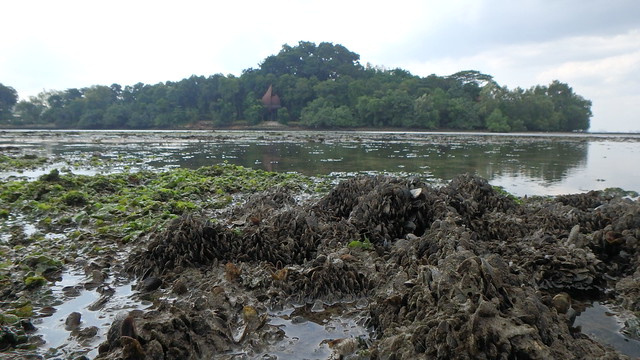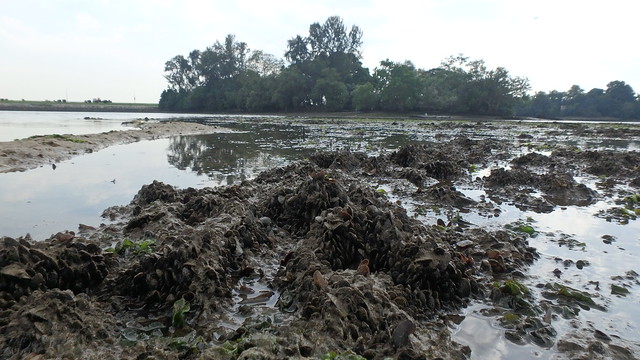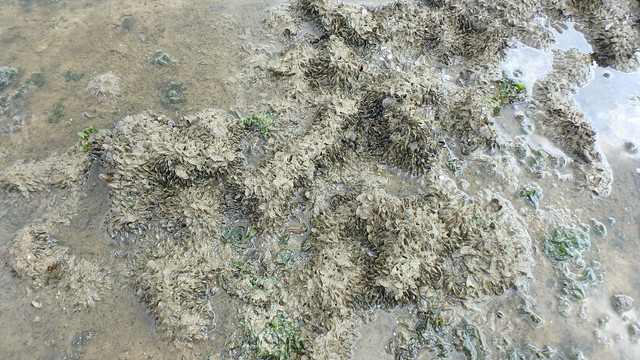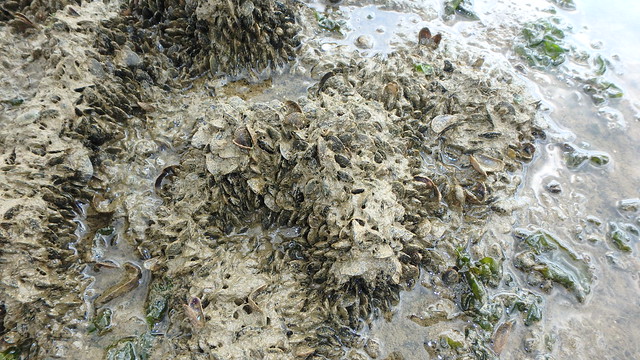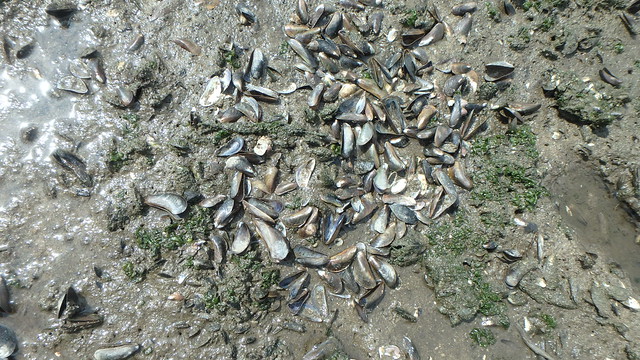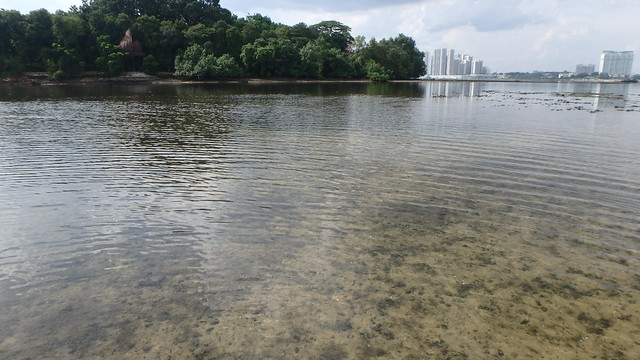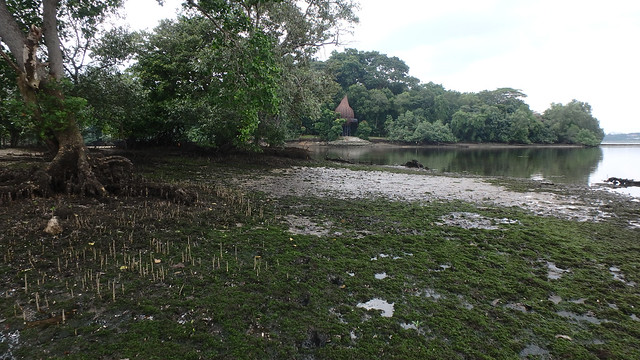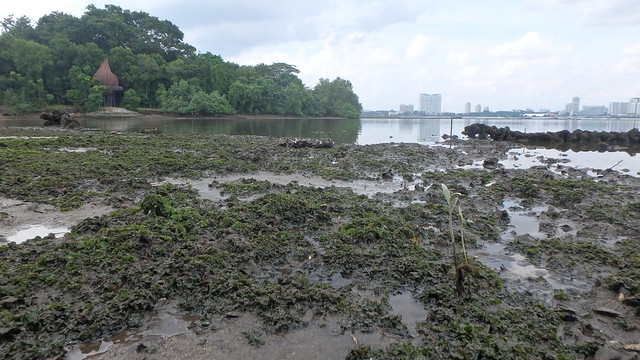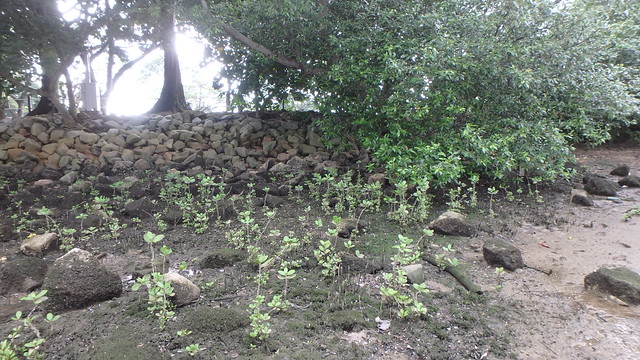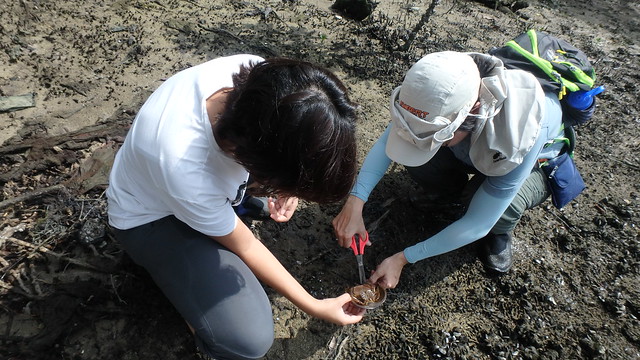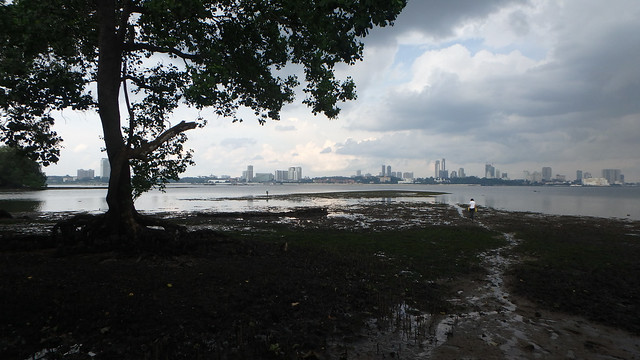The dense beds of mussels are still at Kranji! The situation is quite similar to what we saw in Mar 2017.
We again removed a small amount of net which had trapped some horseshoe crabs. There were still live horseshoe crabs on the shore, but they didn't look like they were doing very well.
Large portions of the shore were covered by mussels that formed dense beds with their byssus threads (fibres that the clams produce to attach to hard surfaces). In some places, they were so dense they bunched up into piles.
Here's a closer look at them.
There some patches of dead mussels.
I saw a few Mangrove horseshoe crabs in pairs. And one small horseshoe crab. One of the pairs appear to be having difficulty burrowing.
Liz Lim share a video of a poor little horseshoe crab struggling because huge mussels had settled on its upperside. Oh dear.
There were also some patches of what appears to be bare sand. And the water is quite clear. Very little sediments stir up when stepping into the water.
There is also a bloom of Sea lettuce seaweed, much of it growing on the mussel beds, and washing up on the high shore.
I saw a few mangrove saplings of various kinds among the mussel beds in the middle of the flats.
There were many more saplings on the high shore.
I saw some interesting mangrove snails here.
And the Mangrove drills appear to be laying egg capsules in large numbers on mangrove tree roots.
Once again, we came across an abandoned fish net. Not a lot, but it had trapped 2 horseshoe crabs, which Sumita and Liz helped to release. More on the Project Driftnet blog.
I miss the old soft muddy shore that was here. I hope the mussel infestation doesn't mean a permanent change on this shore.
Liz Lim shares photos of the clams also smothering another Kranji shore where the Nature Society (Singapore) Horseshoe crab Research and Rescue happens. It's quite scary.
Photos by other on this trip
Liz Lim compares what she saw today with another shore at Kranji that she has been surveying regularly with the Nature Society (Singapore) for their Horseshoe crab Research and Rescue.

